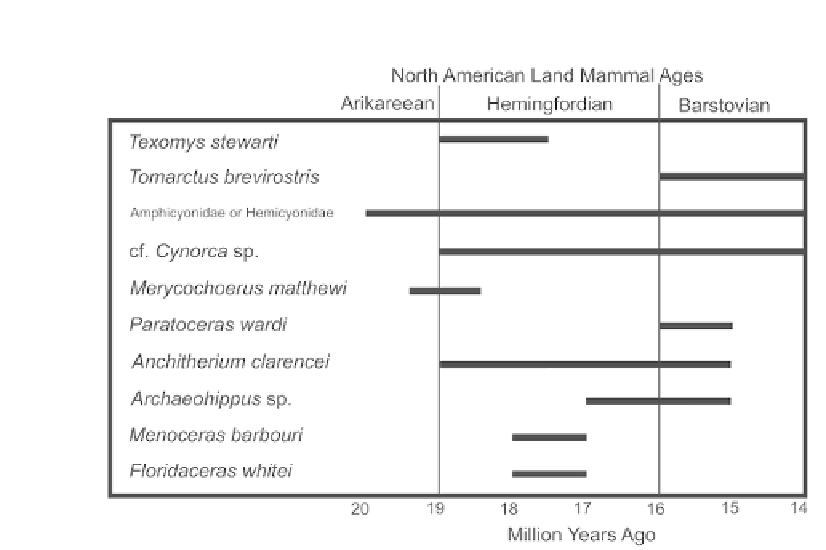Geoscience Reference
In-Depth Information
Figure 10.
Paleogeographic reconstructions of Central America for (A) 20 Ma and (B) 15 Ma. Light
gray represents the outline of tectonic plates containing continental or volcanic-arc crust. Dark gray
represents subaerial land. Base maps for the reconstructions were derived from the ODSN Plate
Tectonic Reconstruction Service (http://www.odsn.de/odsn/services/paleomap/paleomap.html).
The location of subaerial land is based on this study and the distribution of Cretaceous to Tertiary
continental and volcanic terranes as derived from Case and Holcombe (1980).
The Sr analyses show that the La Boca Formation measured at Section 1 is signifi -
cantly older than the uppermost Culebra Formation (23.07-20.99 Ma versus 19.83-
19.12 Ma) (Figure 9). If the La Boca Formation was stratigraphically higher than the
uppermost Culebra Formation, then the Sr data should have indicated a younger age
for the La Boca Formation. Furthermore, the upper Culebra and Cucaracha forma-
tions contain land mammal fossils that are late Hemingfordian to Barstovian in age
(19.5-14 Ma), which is signifi cantly younger than the La Boca Formation measured
at Section 1 (23.07-20.99 Ma) (Figure 10). Other biostratigraphic data from benthic
foraminifera, ostracodes, corals, and molluscs are consistent with an older, early Miocene
age for the La Boca Formation (Blacut and Kleinpell, 1969; Johnson and Kirby, 2006;
Van, 1972; Woodring, 1957-1982).
As our three data sets indicate that the Culebra model is the correct stratigraphic
model for the formations exposed along the Gaillard Cut, we return the La Boca For-
mation containing the E.L. back to the lower Culebra Formation. This stratigraphic
arrangement is consistent with that originally proposed by Woodring and Thompson
(1949) (Figure 4). Our lithostratigraphic, biostratigraphic, and Sr chemostratigraphic
results are discussed in greater detail below.
















